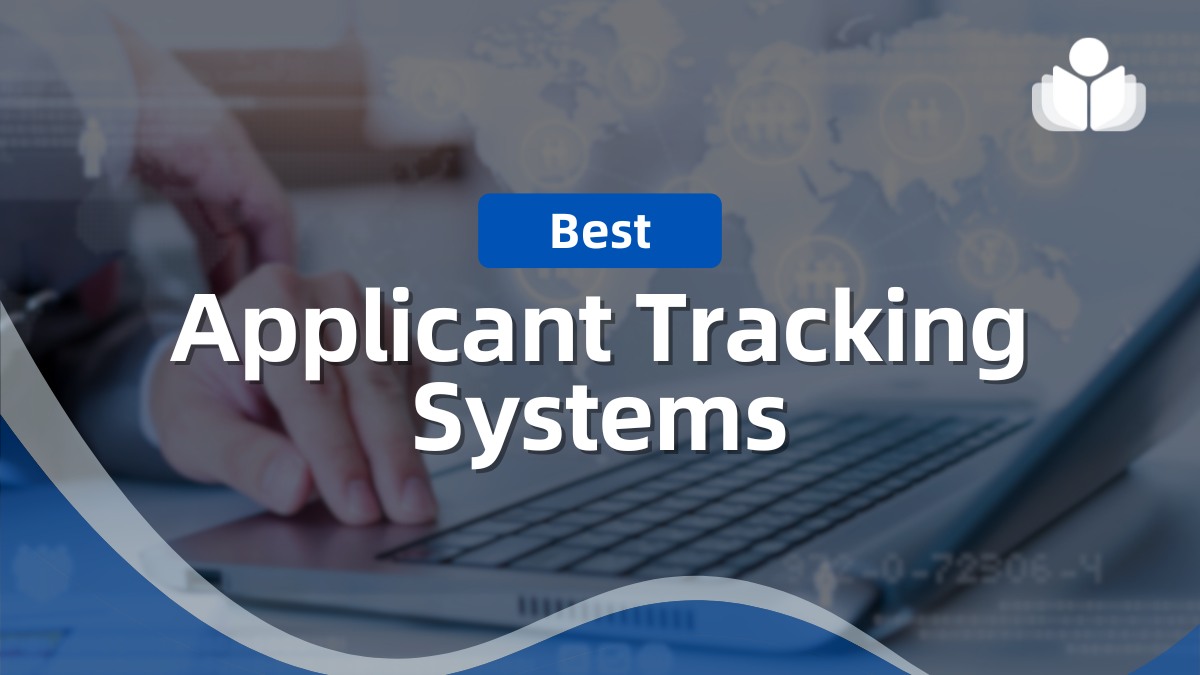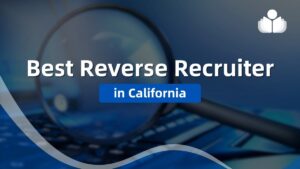In today’s fast-paced recruitment landscape, an Applicant Tracking System (ATS) has become essential for businesses looking to streamline their hiring process. An ATS is a software designed to automate and simplify recruitment, helping HR teams manage job applications, screen resumes, and coordinate interviews.
It categorizes applicants, scores resume based on set criteria, and helps recruiters identify the best-fit candidates quickly. Without an ATS, recruitment teams often have to sift through mountains of data, leading to delays, inefficiencies, and a less-than-optimal candidate experience.
Importance of an ATS
The recruitment process involves repetitive tasks, such as filtering resumes, scheduling interviews, and sending follow-up emails. An ATS significantly improves efficiency by automating these tasks, freeing time for HR professionals to focus on strategic activities, like engaging with candidates and refining hiring strategies. It enhances collaboration between hiring managers and recruiters by providing a centralized platform to share candidate feedback easily.
Another key advantage is that an ATS can vastly improve the candidate experience by ensuring timely communications, applications are processed quickly, and candidates aren’t left waiting for updates. This is critical in today’s competitive job market, where the top talent rushes. With features like automated emails, candidate ranking, and interview scheduling, an ATS helps recruiters stay on top of every stage of the hiring process.
Key Features to Look For
When evaluating an ATS, there are several essential features to consider:
- Resume Parsing: The ability to automatically scan and analyze resumes, extracting meaningful information such as skills, education, and work experience to match candidates with job requirements.
- Candidate Ranking: Ranking algorithms that score applicants based on how well their qualifications align with the job description.
- Integration with Job Boards: Seamless integration with popular job boards and career sites to simplify posting jobs and receiving applications.
- Customizable Workflows: Flexibility in setting up tailored hiring workflows, from the initial application to the final offer.
- Collaboration Tools: Features that enable team members to share feedback and evaluations on candidates within the system.
- Mobile Access: Mobile-friendly interfaces for recruiters and candidates ensure recruitment can happen anywhere.
- Data and Analytics: Reporting features that track crucial recruitment metrics, helping HR teams measure the effectiveness of their hiring processes.
An ATS is no longer a luxury but a necessity for companies looking to stay competitive in attracting and retaining top talent.
Criteria for Choosing the Best ATS
- Ease of Use: A user-friendly interface that streamlines the hiring process for HR teams and offers a smooth experience for applicants.
- Integration Capabilities: Seamless compatibility with job boards, HR tools, and other software to centralize recruitment efforts.
- Customization: Flexible options to tailor workflows, templates, and communication to fit unique business needs.
- Scalability: A system that grows with your company, supporting small teams and larger, more complex recruitment operations.
- Mobile-Friendly: The platform should be easily accessible via mobile devices, allowing recruiters and candidates to engage on the go.
- Data Security & Compliance: Compliance with GDPR and other regional regulations, ensuring secure data handling and privacy protections.
Top Applicant Tracking Systems for 2024
Overview: BambooHR is a user-friendly, cloud-based ATS designed primarily for small to medium-sized businesses. It offers many features, including applicant tracking, onboarding, performance management, and time tracking. The interface is intuitive and easy to navigate, making it an excellent fit for companies with limited HR resources.
Features:
- Simple reporting and analytics tools
- Customizable hiring stages
- Employee self-service portal
- Automated job postings and email alerts
- Intuitive user interface
- Affordable pricing for small businesses
- Strong customer support and community resources
- Includes HR management tools beyond just applicant tracking
- Limited advanced recruitment features compared to some competitors
- Not ideal for enterprise-level hiring needs
- Integration options are more essential than others
Ideal for: Small to mid-sized businesses looking for an all-in-one HR solution.
Overview: Lever combines a traditional Applicant Tracking System with Customer Relationship Management (CRM) capabilities, making it stand out for companies focusing on nurturing long-term candidate relationships. Its strength lies in its focus on collaboration and candidate experience.
Features:
- Customizable workflows and pipeline management
- Collaborative hiring features, such as interview feedback sharing
- Strong integration with CRM and email
- Reporting dashboards and visualizations
- Highly customizable for diverse hiring needs
- Robust collaboration tools for recruiting teams
- Excellent Customer Relationship Management features
- Intuitive reporting for data-driven recruiting decisions
- More expensive than some other options
- Steeper learning curve for new users
- Some users report slower customer support responses
Ideal for: Companies that value Customer Relationship Management (CRM) and collaborative hiring.
Overview: Workable is a robust ATS offering a suite of recruitment tools, including AI-driven candidate sourcing, job board integration, and pipeline management. Its powerful sourcing capabilities make it an excellent fit for businesses that want to attract and manage large candidate pools efficiently.
Features:
- AI-powered candidate sourcing and recommendations
- One-click job board posting to over 200 sites
- Customizable interview scorecards and pipeline stages
- Integration with productivity tools like Slack and Microsoft Teams
- Excellent sourcing capabilities with AI features
- Easy-to-use interface with a clean design
- Scalable solution for companies of all sizes
- Comprehensive job board posting options
- Higher-tier plans can be expensive
- Some advanced features are locked behind premium pricing
- Reporting features could be more in-depth
Ideal for: Teams that want robust candidate sourcing tools and streamlined workflows.
Overview: Greenhouse is known for its focus on structured hiring processes and diversity tools. Its strength lies in its comprehensive approach to recruiting and onboarding, with robust integrations and customizable workflows. Greenhouse is popular among companies focused on building an inclusive and diverse workforce.
Features:
- Integration with a wide array of HR tools and job boards
- Structured interview kits to ensure consistency
- Built-in diversity and inclusion tools
- Comprehensive reporting and analytics
- Excellent focus on diversity and structured hiring
- Highly customizable for larger organizations
- Powerful reporting and data-driven insights
- Scalable for both small businesses and enterprises
- Higher price point, especially for premium features
- Steeper learning curve for smaller teams
- Can be overwhelming for tiny companies
Ideal for: Companies focusing on inclusive hiring and advanced analytics.
Overview: Jobvite is a comprehensive ATS emphasizing social recruiting, employee referrals, and branding. It offers a full suite of recruiting tools, including Customer Relationship Management (CRM), onboarding, and video interviewing tools. Jobvite is especially valuable for large companies with extensive hiring needs.
Features:
- Integration with over 350 third-party applications
- Social recruiting tools to leverage employee networks
- End-to-end talent acquisition suite, including CRM and onboarding
- Video interviewing and AI-driven candidate screening
- Excellent social recruiting and referral tools
- Comprehensive suite for managing the entire hiring lifecycle
- Robust analytics and reporting features
- Well-suited for large enterprises
- Expensive for smaller businesses
- The user interface can feel cluttered for new users
- Some features may be overkill for basic hiring needs
Ideal for: Enterprises with a strong emphasis on branding and referral programs.
Overview: SmartRecruiters is a user-friendly, scalable platform designed for fast-growing companies. It combines ease of use with powerful recruitment features, including AI-powered sourcing, collaborative hiring, and extensive integration options. The platform supports multiple languages and currencies, making it suitable for global teams.
Features:
- AI-driven candidate matching and sourcing
- Collaborative hiring features with role-based access
- Integration with over 600 apps, including HRIS systems
- Global hiring capabilities, supporting multiple languages
- Highly scalable for growing businesses
- Extensive integration capabilities
- Strong focus on candidate sourcing and matching
- Excellent mobile app for recruiters on the go
- Pricing can be prohibitive for tiny businesses
- Some users report occasional glitches with the mobile app
- Advanced features may require premium tiers
Ideal for: Fast-growing companies need a scalable solution that supports global hiring.
Benefits of Using an Applicant Tracking System (ATS)
- Efficiency:
- Automating administrative tasks like sorting resumes, scheduling interviews, and sending communications helps streamline recruitment processes.
- This automation reduces manual effort, allowing HR teams to focus on strategic tasks.
- Enhanced Candidate Experience:
- ATS platforms ensure seamless applicant communication through automated email alerts and interview scheduling.
- A streamlined application process improves the candidate experience, making it easier for candidates to apply and stay updated.
- Better Decision-Making:
- ATS systems offer data-driven insights, providing analytics on candidate sourcing, interview performance, and hiring trends.
- These insights help HR teams make informed decisions, leading to better recruitment outcomes and optimized hiring strategies.
- Collaboration:
- Many ATS platforms feature tools that enhance internal collaboration between HR teams and hiring managers, enabling them to collectively share feedback, evaluate candidates, and manage the hiring process.
- Reduced Time-to-Hire:
- An ATS significantly shortens the hiring timeline by automating candidate screening and interview scheduling tasks, allowing companies to fill positions faster.
How to Implement an ATS in Your Company
- Assess Your Needs: Identify bottlenecks in your recruitment process, such as time-consuming resume screening or a need for more collaboration among HR and hiring managers.
- Set a Budget: Review different pricing models (monthly subscription, pay-per-hire, freemium) and choose one that fits your company’s size and hiring frequency.
- Select the Right ATS: Prioritize features that solve your pain points, such as resume parsing, interview scheduling, or candidate management.
- Train Your Team: Provide hands-on training and resources to your HR team and hiring managers to ensure smooth adoption and efficient use of the ATS.
- Customize Workflows: Tailor the ATS to match your recruitment workflows, including creating job templates, communication settings, and automated processes.
- Onboarding and Support: Choose an ATS vendor with robust onboarding support that ensures seamless implementation and ongoing customer assistance for troubleshooting.
Trends Shaping ATS in 2024
- AI & Machine Learning: Advanced algorithms and predictive analytics help ATS platforms match candidates more effectively, using historical data and job fit analysis to streamline hiring.
- Diversity & Inclusion Tools: Many ATS systems are integrating bias-reducing features, such as anonymizing candidate data and offering tools to ensure more equitable hiring practices.
- Automation: Automated workflows, from resume screening to interview scheduling, are reducing manual tasks, allowing HR teams to focus on more strategic areas of recruitment.
- Candidate Engagement: Modern ATS platforms now include tools like automated messaging, personalized email sequences, and real-time application tracking to keep candidates informed and engaged throughout the process.
Conclusion
Choosing the right Applicant Tracking System (ATS) can transform your hiring process, saving time and improving candidate quality. Evaluating your needs, such as ease of use, scalability, or advanced features like AI and automation, is essential. The best ATS depends on your company’s size, budget, and hiring goals.
We recommend starting with a few options that align closely with your priorities. Most ATS providers offer free trials or demos, so take advantage of these to explore their functionality. The proper ATS will streamline recruitment efforts and position your company for long-term success.
 Sections of this topic
Sections of this topic















